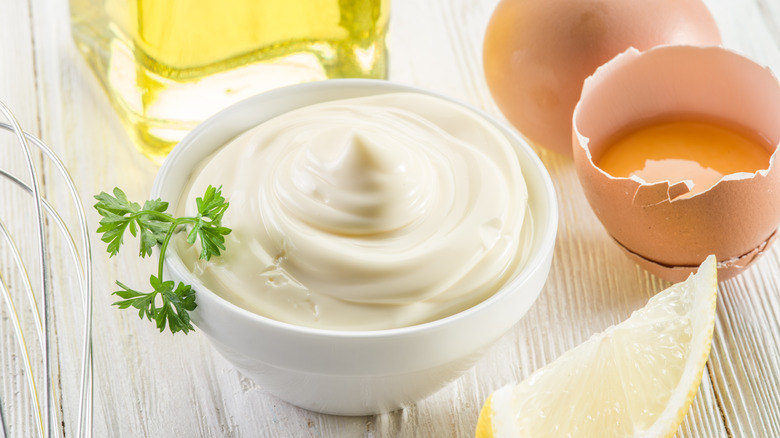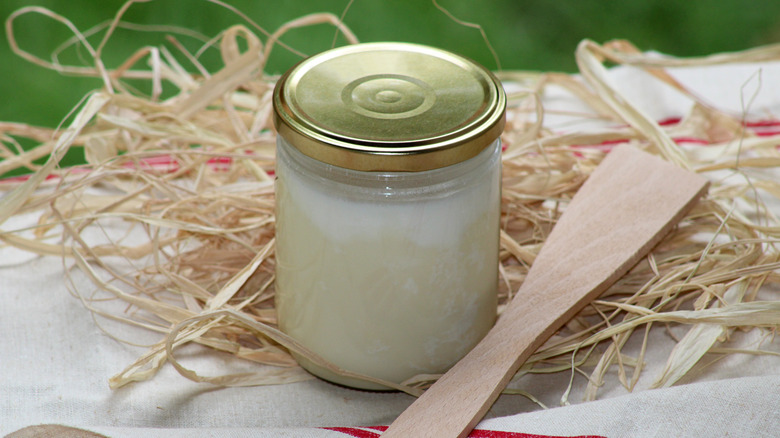The Decadent Fat You Should Try Using For Homemade Mayonnaise
Love it or hate it, mayonnaise is a culinary mainstay. The polarizing condiment is hotly debated in any of its forms. From toppings to dips to the base of sauces, indifference is rarely the emotion it invokes.
A basic mayo is just a creamy emulsion of egg yolks, oil, and an acid such as citrus or vinegar, and yet, the flavor and consistency tend to resemble none of those three components. What we know as mayo has been around since 18th century France when a chef was out of cream for his sauce so he subbed in olive oil, according to The Nibble.
While more flavor variations and brands of mayo are popping up on shelves, nothing beats homemade mayonnaise. Slathered on a slice of bread or mixed into a tuna or chicken salad, mayonnaise is surprisingly easy to make and even easier to elevate with a simple ingredient swap. What decadent fat can you sub in that will take your mayo to a whole new level?
A quacky swap-in
Emulsification is simply the combination of two ingredients that do not mix — like oil and water. When it comes to mayo, the egg yolks act as the link between the acid (citrus or vinegar) and the fat (oil). The fat is slowly drizzled in as the yolks and acid are quickly mixed to inhibit any separation (via How Stuff Works).
While any oil will suffice for the fat component, duck fat is a luxurious swap-in to try the next time you whip up a batch of homemade mayo. The rich, umami-laced flavor of duck fat seems to make just about anything taste better, including fried chicken.
It's an easy one-to-one sub, just make sure the duck fat and eggs are at the same temperature, per The Weston A. Price Foundation, to ensure they will emulsify. The mayo will solidify a bit in the fridge, but can easily be warmed up at room temperature. An added bonus? Duck fat is chock full of fat-soluble vitamins which boost everything from mineral utilization to protection from heart disease.

